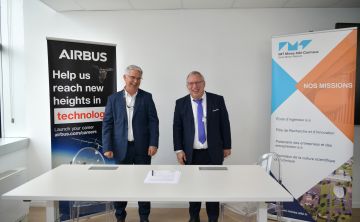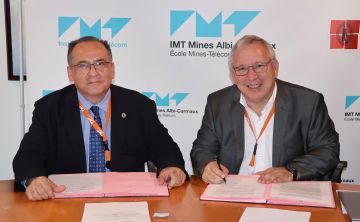An innovative, environmentally friendly and economical method developed by a team of scientists from IMT Mines Albi (France) and Princeton University (USA) to transform biomass and biowaste into graphene
Ange Nzihou, Pr. at the RAPSODEE Center UMR CNRS 5302 and Claire White, Pr. at the Andlinger Center for Energy and the Environment at Princeton University are working together on the project.
Promising developments in the sustainable production of graphene
Ange Nzihou, Professor at the RAPSODEE Center UMR CNRS 5302, at IMT Mines Albi, a specialist in waste recovery and 2020 winner of the Fulbright International Scholarship for Scientific Excellence, is conducting research alongside Claire White, Professor at the Andlinger Center for Energy and the Environment at Princeton University and an expert in the characterization of materials with complex structures.
The research project focuses on the synthesis and understanding of the mechanisms involved in the formation of biosourced or green graphene from bioresources (biomass and biowaste). Graphene is a strategic material with remarkable properties and many potential applications in the fields of energy storage, electronics, optics, health and more. Producing it sustainably and on a large scale is a major economic and technological challenge.
Graphene is a key material in the energy, electronics, health and mechanical engineering sectors.
An innovative method for processing waste
In their search for an environmentally friendly method of producing graphene, the two international researchers turned to underexploited sources of biomass as a raw material. Professor Ange Nzihou and his team discovered that by inserting iron into biomass and heating it in a low-oxygen environment using a carbonization process, it was possible to transform cellulose-rich biomass into a final material with large areas of ordered graphene sheets. Claire White drew on her expertise in characterization at the atomic and nanometric levels to discover how iron creates catalytic behavior.
The process developed by Ange Nzihou and Claire White uses a non-toxic iron-based catalyst to transform biomass biowaste into graphene. This environmentally friendly and economical approach opens up promising avenues for the sustainable production of graphene.
Read the articles related to this innovation:



